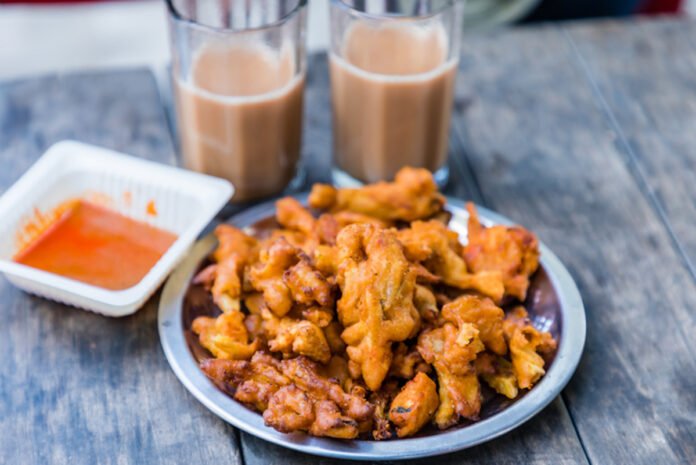Few things stir Indian hearts during the rainy season like the sound of rain and the aroma of sizzling hot pakoras wafting from the kitchen. This pairing isn’t just about hunger—it’s about comfort, culture, and tradition.
In homes across India, the monsoon signals the return of spicy, crispy fritters. Whether it’s onion, potato, or paneer pakoras, this beloved snack seems to have found its perfect match in the rains.
The Science Behind the Craving
Krish Ashok, food science expert and author of Masala Lab, sheds light on the psychological link.
“When the weather is cold,” he explains, “we crave food that is calorie-dense. That’s why deep-fried carbohydrates appeal so strongly. Add in the contrast of textures—crisp outside and soft inside—and you get a multisensory delight that makes pakoras irresistible in monsoon.”
This craving is not random. Our bodies seek warmth and energy when temperatures drop. The spicy heat from the pakoras not only stimulates the palate but also helps raise body temperature, making us feel cozy.
A Tradition Rooted in Memory
The association of hot pakoras and rainy weather has been passed down through generations. Grandparents recall rainy afternoons when families gathered around cups of masala chai, sharing plates of pakoras with laughter and stories.
Cultural analyst Priya Menon notes, “Pakoras are not just food. They are symbols of warmth, bonding, and seasonal joy. In many parts of India, monsoons mark a pause from agricultural work, giving families time to relax—and cook indulgent snacks.”
Culinary Trends Evolve, But Love for Pakoras Remains
While traditional versions like aloo and baingan pakoras continue to dominate, modern kitchens have embraced twists. Cheese-filled, chicken, and even spinach-corn pakoras are now popular across cities. Yet, their connection with the rainy season remains unchanged.
This evolution reflects changing dietary preferences, especially in urban households, where air fryers and healthier oils are used to make the snack less greasy. But the essence—the joy of eating pakoras as it pours outside—stays the same.
Regional Varieties Add Flavor to the Tradition
From Bengal’s beguni to Rajasthan’s mirchi bhajiya, and Punjab’s bread pakora, every region has its version of this crispy delight. In Maharashtra, kanda bhaji dominates, while banana flower pakoras are a rainy-day staple in Kerala.
These regional touches highlight India’s culinary diversity, yet unite us through one emotion: monsoon nostalgia.
A Cup of Chai Completes the Experience
No plate of pakoras feels complete without a steaming cup of spiced chai. The tea-pakora combination is perhaps the most comforting part of monsoon evenings. The slight bitterness of tea perfectly offsets the richness of the pakoras.
This blend of hot, spicy, and aromatic flavours makes the duo the undisputed king of monsoon indulgence.
More Than Food—A Monsoon Ritual
In many households, the first monsoon shower is celebrated with pakoras. It signals a seasonal change—from summer heat to cool winds. And with it comes a shift in food habits.
Psychologists say that food rituals like these enhance emotional well-being. “When we associate certain foods with specific weather or festivals, it creates a sense of rhythm and belonging,” says psychologist Dr. Arvind Basu.
Whether you’re in Delhi, Guwahati, or Chennai, the craving for hot pakoras during rainy weather is universal. It’s more than hunger—it’s an experience that feeds the soul.
So, the next time dark clouds gather, don’t forget to heat up that oil, drop in your favourite batter, and let the monsoon magic unfold.
For recipes and regional monsoon food traditions, visit our Monsoon Food Guide.

